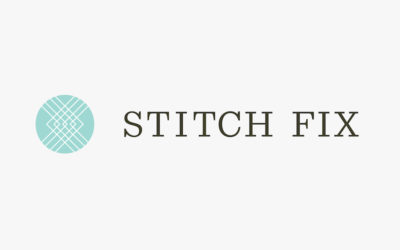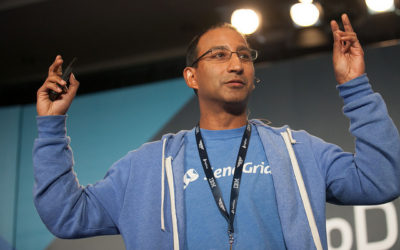Target is buying Alabama-based, same-day delivery service Shipt for $550 million
The company will still work to expand its partnerships with other retailers seeking same-day, last-mile services, according to executives from both companies.
That means that Shipt will continue to expand its delivery businesses and become an even more significant challenger to Instacart (also a Target partner).
Target customers will still need to sign up to Shipt to get the benefits of the service.
Once a customer places an order, the Shipt shoppers send a text to connect with the person who placed the order to see if there are any updates or exchanges that need to occur as a shopper moves through the store.
Smith says he hadn’t heard of Instacart when he launched his own fledgling service.
Target says that Shipt “significantly accelerates Target’s digital fulfillment efforts.” After the acquisition, roughly half of Target’s stores will have the benefit of same-day delivery services to guests.
By the end of the year, all Target stores will have the service as an option for customers.
“We’ll continue growing our marketplace and membership base, working with a variety of retailers to drive scale and efficiencies.
We look forward to introducing Target guests to the convenience of our same-day delivery services, with the level of personal attention only Shipt can provide.” While companies like Instacart have famously had some issues with customer service, Shipt’s usability was held up as another selling point — and a reason behind Target’s decision to acquire the company.
“We believe by buying it we can provide additional resources to Bill and his team to scale more quickly his marketplace,” says Mulligan.
Aston Martin could go public in wake of Ferrari’s listing success
Aston Martin is eyeing the success of Ferrari’s listing as speculation grows that the British maker of some of James Bond’s cars could be considering its own initial public offering as early as next year.
“Clearly Ferrari have IPO’d, they’ve made a great success of it,” Mark Wilson, the finance director of Aston Martin, told The National.
“We are very, very similar to Ferrari in how we’re constructed in our heritage and brand and history in cars, so people always naturally make that leap.” Strong results have fuelled the IPO speculation, with the luxury motor maker roaring back into profit this year after seven years of losses, helped by healthy demand for its DB11 sports car.
“In reality,” he added, “you would have to ask my shareholders what they thought of [a flotation],” referring to the Kuwaiti and Italian private equity funds that control the business.
Last month, Aston Martin said it was on course to post its first annual pre-tax profit since 2010.
“It’s also the first time ever in a financial year where we’ve had four consecutive quarters of profitability – we’ve never done that before,” Mr Wilson said.
The success is largely attributable to rising demand for its latest sports cars, including its flagship DB11, which was launched last year.
“We really saw that car kick off very strongly,” Mr Wilson said.
Aston Martin exports 80 per cent of its vehicles sales overseas, including to the UAE, where the new cars have been extremely well received.
Finally on Brexit, Mr Wilson welcomed the breakthrough in the UK’s talks with the EU last week and said that Aston Martin, like all other British manufacturers, is keeping a close eye on further developments.
Stitch Fix’s Second Act
Stitch Fix’s recent initial public offering (IPO) didn’t quite live up to expectations.
Instead, its stock opened at $16.90 — and, by the end of the day, the price came in at $15 a share.
“On pricing, we didn’t end up where we had hoped to be.
As a result, Stitch Fix grew and focused on becoming profitable at the same time.
Using consumer self-reporting on style and taste preferences combined with artificial intelligence (AI) studying and learning from past consumer choices, Stitch Fix does the shopping and sends their subscribers monthly shipments (called fixes) of clothes and accessories.
Stitch Fix boasts repeat rates among its customers of 86 percent, strongly implying consumers like what they are getting.
Customers who keep five or more items receive a 20 percent discount; customers who keep three or four get 10 percent off.
It’s not an identical fashion subscription service, lacking Stitch Fix’s close focus on personal styling, but it is similar enough to be worrisome for a still up-and-coming firm like Stitch Fix.
But CEO Katrina Lake remains focused on the long term, noting that she conceived and created Stitch Fix to be a personal shopping brand she could work at “forever,” which means the timeframe she is most likely to consider is long-term — what will help the brand grow sustainably over time.
Now the question is, can they keep it going through their second act on the public markets?
Uber’s New CEO Puts It on the Path to IPO — But Is It Time?
Ever since people started using Uber as a word in the English language, it’s begged the question of when the ridesharing company will offer ridesharing in a stock of its own.
With an IPO a near certainty, the question remains as to where the company will stand at the time it starts trading on Wall Street.
While Wall Street has forgiven losses in hot stocks such as Tesla Inc (NASDAQ:TSLA), investors can turn on stocks that do not become profitable at some point.
As for the question on when Uber will IPO, Khosrowshahi says the company has targeted a 2019 IPO.
Uber’s reputation has also taken a hit thanks to hackers.
This likely would have hit an Uber stock hard had the public had the chance to react.
TomTom will provide the company with mapping and traffic data for over 300 of the cities currently served.
The initiatives in self-driving cars, helicopters and mapping can only open more doors.
The company has faced problems with company losses, workplace culture, hacking and aggressive business practices.
With its new leadership and the determination to open and improve its concept, allowing investors to rideshare on an IPO could become Uber’s most popular route.
Chinese Online Lender Dianrong Eyes 2018 IPO, Could Raise at Least $500 Million
Dianrong.com, a Chinese online lending platform started and run by a co-founder of LendingClub Corp. , is planning an initial public offering as soon as next year that could raise at least $500 million, according to people familiar with the matter.
The Shanghai-based company is planning to list its shares in Hong Kong, the people said.
The two companies have similar business models, and Dianrong has in the past described itself as the “LendingClub of China,” though the two companies aren’t directly connected.
Dianrong previously said it issued 23 billion yuan worth of loans in 2016 funded by more than 3.6 million investors.
Last Friday, the China Banking Regulatory Commission pledged to clean up lax lending practices among businesses that make micro loans, which are small, short-term loans that carry high interest rates.
The regulator said online micro lenders without proper licenses would be banned from operations, and announced caps on interest rates and financing fees.
Guidelines issued last week capped interest rates on loans by peer-to-peer platforms and required these platforms not to collect charges like commissions and management fees.
“That said, we continue to explore all our options in the capital markets and no final decisions have been made.” Despite regulatory scrutiny of Chinese online lenders, investment bankers are expecting a flurry of fintech IPOs next year, though they caution some listings could be put off if investors become nervous about growth prospects.
Even LendingClub’s shares have lost much of their value since the company’s IPO in late 2014, after its loan growth slowed and the company last year disclosed problems with its lending practices.
Write to Julie Steinberg at julie.steinberg@wsj.com, Anjani Trivedi at anjani.trivedi@wsj.com and Chuin-Wei Yap at chuin-wei.yap@wsj.com
Aspen REIT: The St. Regis IPO
REITs provide a way to mitigate company-specific risk because many REITs themselves represent a diversified portfolio of real estate, such as Realty Income (O), which has more than 5,000 properties.
Aspen REIT, Inc. (Pending:AJAX) is a newly-formed, single-asset real estate investment trust that plans to execute its initial public offering in December 2017.
The local population commonly refers to Aspen Mountain as Ajax Peak or Ajax Mountain, which explains Aspen REIT’s choice of the ticker symbol AJAX.
As of September 30, 2017, Elevated Returns had approximately $250 million in assets under management, including the St. Regis Aspen Resort.
In a brief conversation with Stephane De Baets (pronounced “ste fahn de bates”) last month, he indicated that his goal is to have perhaps six or seven single-asset REITs managed by the external manager, Elevated Returns.
Jason Kirschenbaum, the Manager’s managing director, joined Elevated Returns in 2016 and has over 10 years of experience in the real estate business, including real estate investment, financing and development.
The Aspen Chefs Club will not be included in the IPO.
(3) As described below, our Manager is controlled by Mr. De Baets.
The St. Regis Aspen Resort was purchased by De Baets in 2010 for $70 million.
The St. Regis Aspen is an attractive property.
Canadian waste management firm GFL plans $1-billion IPO: sources
Open this photo in gallery: Private equity-backed Canadian waste management company GFL Environmental Inc. is seeking to raise as much as $1-billion in an initial public offering that could be filed as early as the first quarter, people familiar with the situation told Reuters on Wednesday.
A $1-billion IPO would be the biggest Canadian listing since Kinder Morgan Canada Ltd. raised $1.7-billion early this year, and would value GFL at nearly $5-billion, the people said.
The IPO would provide an exit for investors including U.S. private equity firm HPS Investment Partners LLC and Macquarie Infrastructure Partners III, a fund linked to a unit of Australian financial services firm Macquarie Group.
While an IPO is one of several ways to unlock value, no decision has been made to proceed with an offering, GFL general counsel Joy Grahek said.
GFL has been working closely with Bank of Montreal and Canadian Imperial Bank of Commerce, which are likely to play a big role in the IPO, the people said.
The company raised $350-million in a bond offering in May.
Led by chief executive Patrick Dovigi, GFL has grown through acquisitions into one of Canada’s biggest waste management companies. “This is an IPO everyone would want to be on.”
The company could raise to $600 to $1-billion and has not made a final decision yet, he added.
Rivals include Waste Connections Inc, which has operations in Canada and the United States.
Blue Apron replaces CEO-founder Matt Salzberg after post-IPO fumbles
Matt Salzberg, who founded the business in 2012, is being replaced by Blue Apron’s CFO Bradley Dickerson, he said in a letter to employees on Thursday.
Salzberg will be the company’s executive chairman and remain chairman of the board of directors.
In Salzberg’s letter, he acknowledged that Blue Apron’s “public market performance has fallen short of my expectations” and praised his successor’s skill set. “He also has a keen understanding of what is required to improve our financial performance,” Salzberg wrote.
Blue Apron said it was looking for a new CFO.
Blue Apron stock debuted in June at $10; on Friday morning, it was $3.13 in mid-morning trading.
Salzberg is the latest in a string of chain restaurant founders who’ve bowed out recently.
In April, Starbucks CEO Howard Schultz — not the chain’s founder, but the executive credited with building it into a global brand — shifted from CEO to executive chairman.
More: Blue Apron layoffs hit the office hardest, warehouse workers mostly spared, sources say More: Growing home meal kit phenomenon is stirring up food industry, stressing out supermarkets More: Blue Apron disappoints in its first-ever earnings report Wall Street seemed pleased with the Blue Apron announcement.
You be the chef,” as a tag line is for “prepared food kits,” according to the U.S. Patent and Trademark Office.
HDFC approves stake sale in HDFC AMC via IPO, to hold 50.01% post public offer
HDFC on Thursday informed exchanges that it has approved to offer a part of its shareholding in HDFC Asset Management Company (HDFC AMC), through an offer for sale in an initial public offer.
The board of directors of HDFC AMC chaired by Deepak Parekh today approved initiating the process of an IPO, subject to regulatory approvals.
As of March 2017, HDFC held 59.99 percent stake in HDFC AMC, which reduced to 57.36 percent at the end of September 2017.
After the proposed IPO, HDFC AMC will continue to be a subsidiary of HDFC. “We believe that the listing would unlock value of the business for shareholders and provide investors an opportunity to participate in emerging Asset Management space within our group,” Deepak Parekh, Chairman of HDFC AMC.
HDFC and Standard Life Investments have also, in principle, approved the IPO of HDFC AMC by offering shares to the public in one or more tranches. “After dilution, the shareholding of HDFC and Standard Life in HDFC AMC will be at least 50.01 percent and 24.99 percent, respectively,” the company said in its filing.
India’s Future Supply Chain, Shalby to launch IPOs next week
Nov 28 (Reuters) – Indian logistics provider Future Supply Chain Solution’s initial public offering (IPO) of shares to raise up to 6.5 billion rupees ($100.9 million) will open next week, adding to what has been a record year for initial share sales in the country.
Griffin Partners and India’s Future Enterprises Ltd , shareholders of Future Supply Chain Solutions, will sell up to 9.8 million shares in a price range of 660 rupees to 664 rupees each in the IPO that will be open for subscription from Dec.6 to Dec. 8, according to a public notice.
At the upper end of the price band, the IPO will raise about 6.50 billion rupees.
Meanwhile, hospital operator Shalby Ltd is also seeking to raise up to 4.8 billion rupees by selling new shares in a price range of 245-248 rupees in the IPO that will be open for subscription between Dec. 5 and Dec.7, according to a public notice.
One of its shareholders will sell up to one million shares in the IPO, taking the total fund-raising from the IPO to about 5.1 billion rupees.
India has seen a record year for IPOs with proceeds from initial share sales topping $11 billion so far in 2017.
Edelweiss, Citic CLSA and Nomura are the global coordinators and bookrunners for the Future Supply Chain IPO, while IDFC Bank, IIFL Holdings and Yes Securities are the other bookrunners.
Edelweiss, IDFC Bank and IIFL Holdings are managing the Shalby IPO.
($1 = 64.4300 Indian rupees) (Reporting by Vishal Sridhar in Bengaluru; Editing by Vyas Mohan)
Springer Nature asks JP Morgan, Morgan Stanley to organize IPO: sources
FRANKFURT (Reuters) – SpringerNature, the publisher of science magazines Nature and Scientific American, has asked JP Morgan (JPM.N) and Morgan Stanley (MS.N) to organize a potential 4-5 billion euro stock market listing next year, people close to the matter said.
The SpringerNature joint venture is 53-percent owned by German publisher Holtzbrinck, with buyout group BC Partners holding the rest.
It was formed in 2015 through the merger of Holtzbrinck’s Macmillan Science and Education unit with BC Partners’ Springer business, which publishes scientific, technical and medical books and journals.
BC Partners declined to comment on the listing plan, while Holtzbrinck was not immediately available for comment.
The source added that while BC Partners will sell some shares in the IPO, Holtzbrinck may even buy some and is aiming to keep a stake of more than 40 percent in the company.
The bulk of the proceeds would be used to cut net debt, which currently stands at roughly 3 billion euros ($3.6 billion), with a view to bringing indebtedness down to 3.75 times earnings before interest, tax, depreciation and amortization after the IPO, the source said.
Springer Nature is targeting adjusted 2017 EBITDA of just below 600 million euros, after 564 million in 2016, the source added.
While Holtzbrinck will not contribute other parts of its digital activities to the Springer Nature joint venture ahead of an IPO, such a move could be agreed at a later stage, the source said.
In 2015, BC Partners said that it targeted a stock market listing of the business within two to three years.
At the time, the company was valued at more than 5 billion euros including debt.
Eberhart: Saudi Purge Adds to Aramco’s Challenges on Public Offering
The arrests of scores of Saudi royals, ministers, and businessmen in an anti-corruption sweep that started November 3, and the resulting swap of assets for freedom, may have silenced potential rivals of Crown Prince Mohammed bin Salman.
Investors were already viewing the public offering of up to 5 percent of Saudi Inc. with trepidation given the kingdom’s mixed record on human rights.
In declaring a $2 trillion valuation target for the initial public offering of Saudi Aramco, Prince Mohammed has been betting on an oversupplied oil market and falling prices to hobble U.S. shale producers and provide him with the necessary funds to carry out his reform plan.
To make the $2 trillion target pencil out, Prince Mohammed needs oil prices above $60 a barrel.
Many shale plays can now produce at prices as low as $35 a barrel.
Skeptical investment banks looking at the public offering have pegged the value of Saudi Aramco at half or less of Prince Mohammed’s asking price.
Far from abandoning their strategy of attrition against America’s shale industry, the Saudis have doubled down with their OPEC partners with plans to extend production cuts through the end of 2018.
Shale, which accounts for roughly half of all domestic output, helped push total U.S. production in September to 9.5 million barrels a day, the highest output for that month since 1970, and the highest for any month since April 2015, according to the Energy Information Administration (EIA).
U.S. production is expected to jump even higher in 2018 to 9.9 million barrels, surpassing the previous high of 9.6 million barrels a day set in 1970, and closing rapidly on Saudi Arabia’s own 10.2 million barrels of daily production.
The era of affordable oil may complicate Prince Mohammed’s dreams of reforming the kingdom, but they are good news for U.S. consumers, especially since domestic shale production is projected to continue to grow as a share of total U.S. output.
Cromwell European Real Estate Investment Trust’s Initial Public Offering: What Investors Need to Know
Cromwell European Real Estate Investment Trust (REIT) has filed its initial public offering (IPO) prospectus, after putting a stop on its original plan two months ago.
Here are six things investors should know about the potential newest kid on the block.
A total of 428.5 million units will be on offer, which consists of a placement of 392.2 million units to institutional investors and 36.4 million units to the Singapore public, at €0.55 per unit.
Cromwell European REIT plans to mainly use the proceeds to acquire 60 properties in Denmark, France, Germany and the Netherlands from funds managed by Cromwell Property Group, and 14 Italian properties from third parties.
The projected distribution yield for 2018 is 7.8% and for 2019 is 8%.
The IPO is open from 22 November 2017 (9:00 pm) to 28 November 2017 (12:00 pm).
Trading is expected to commence on 30 November 2017 (2:00 pm).
It will teach you how you can grow your wealth in the years ahead too.
Also, like us on Facebook to follow our latest hot articles.
The Motley Fool’s purpose is to help the world invest, better.
Stitch Fix Prepares an I.P.O. in the Shadow of Amazon
Stitch Fix is an increasingly rare kind of start-up pursuing a public listing, because it has shown it can turn a profit.
At that price, Stitch Fix raised about $120 million and was valued at about $1.5 billion.
Customers then receive five items via mail, shipping back articles they do not want free of charge.
Should a customer keep everything in a box — a “fix,” in the company’s jargon — they receive a 25 percent discount.
“I founded Stitch Fix to take on a very human problem: How do I find clothes I love?” Ms. Lake wrote in a letter to potential investors that is included in the company’s I.P.O.
Before its offering, the company raised only $42.5 million and kept its valuation relatively low, which would allow early backers to receive a bigger return on their investments should the company’s total value increase once it is publicly traded.
In its most recent fiscal year, which ended July 29, it collected $977.1 million in sales, surpassing last year’s $730.3 million.
Crew, which has struggled to adapt to online selling, is among retailers for which a Chapter 11 filing is a distinct possibility.
(Benchmark invested in the company at a $300 million valuation three years ago.)
“Stitch Fix is not better stores, it’s not better e-commerce, it’s a better way,” Ms. Lake asserted in her letter to potential investors.
In another enterprise tech IPO, SendGrid sees shares rise 13%
Cloud communications platform provider SendGrid Inc., best known for its email distribution services, saw its shares rise in early trading by 16 percent from their initial offering price as the company sold shares publicly for the first time today.
The stock ended the day at an even $18 a share, up almost 13 percent.
That was above its expected range of $13.50 to $15.50 a share.
The offering and the rise in the stock price are yet another sign of investors’ growing appetite for business-oriented tech IPOs.
Earlier in the year, MuleSoft Inc.’s shares popped 44 percent the first day.
So far, 2017 has been a relatively healthy year for IPOs after a much-publicized IPO drought last year.
But others believe that this activity is a sure sign that the market is experiencing a bubble that is bound to burst.
As for SendGrid, Will Conway, chief executive officer at Mailgun Inc., told SiliconANGLE that its float of demonstrates how email is “still the most trusted form of business communication,” which is why it continues to grow despite the popularity of in-app messaging and SMS.
SparkPost Inc. CEO Phillip Merrick was also positive on the float despite, or perhaps because, SendGrid is a competitor, wishing SendGrid CEO Sameer Dholakia (pictured) and his team well.
“Software touches every part of our lives — from enterprise work apps, to social networks, to buying a home or finding a job,” he said.
Wagners initial public offering priced at top of range
ASX aspirant Wagners has priced its initial public offering at the top of the range, sources told Street Talk on Friday night.
The Toowoomba-based building products company had been seeking to raise $192.3 million to $196.8 million at $2.63 to $2.71 a share, or 18.4 to 18.9-times forecast profit.
The $2.71 final price means the company will list with a $437.4 million market capitalisation and $497.6 million enterprise value on December 12.
Fund managers had been asked to bid for new shares at a bookbuild on November 17, prior to a prospectus being lodged with the corporate regulator.
Wagners is a manufacturer of cement, concrete and other composite building materials.
The company had 532 full-time employees as at October 1.
It expects $231.8 million revenue in the 2018 financial year, on a proforma basis, $50 million earnings before interest, tax, depreciation and amortisation, and $23.2 million profit.
Credit Suisse and Morgans oversaw the offer as joint lead managers.
McCullogh Robertson Lawyers is legal adviser.
The myth of the hot IPO: Why investors need to be wary of initial public offerings
The typical IPO underperformed the S&P TSX Composite Index with remarkable consistency, lagging the index in eight of the last 10 years, such that the typical IPO buyer incurred a loss of 3.5 per cent per year, whereas the TSX earned 9 per cent in a typical year.
Unlike other trades where existing public shareholders sell their shares in exchange for money from a new buyer, an IPO is either a treasury or a secondary offering.
In a treasury offering, typically the company is raising money to fund growth plans and the new investor buys shares directly from the company.
With a secondary offering, the company does not raise any money, but lists its shares on an exchange and the new investor buys shares from an existing shareholder — quite often the founders of the company, or occasionally from earlier stage investors like private equity or venture capital firms.
In both cases, the company’s executive team and board of directors will have hired one or more investment banks to manage the IPO.
Selling shareholders will always prefer a higher valuation and a higher IPO price for this very reason.
Investment banks also compete aggressively amongst themselves to win an IPO mandate, since the fees can be very lucrative for a large IPO.
The question IPO investors ought to ask themselves is: “If the expert insiders think now is such an opportune time to sell, what is it that I know that they don’t that makes me so confident now is an opportune time to buy?” Once issued, a new IPO undergoes a seasoning period in the public markets.
Selling shareholders and key executives typically covenant not to sell any further shares for a certain period of time — usually three, six, or 12 months after an IPO.
Investment bankers managing the IPO are supposed to treat all investors fairly.
Victory Capital Corp. announces completion of initial public offering
TORONTO, Nov. 14, 2017 /CNW/ – Victory Capital Corp. (“Victory”) (TSXV:VIC.P), a capital pool company, is pleased to announce that it completed its initial public offering by issuing 3,888,750 common shares at a price of $0.20 per share, for gross proceeds of $777,750.
It is expected that the common shares of Victory will be listed and posted for trading on the TSX Venture Exchange (the “Exchange”) under the trading symbol “VIC.P” in the near future and Victory will provide an update to the market once a definitive trading date has been set by the Exchange.
Gravitas Securities Inc. (“Gravitas”) acted as agent for the initial public offering along with other selling group members.
In connection with the offering, Victory granted Gravitas agent’s warrants (the “Agent’s Warrants”) to acquire 388,875 common shares at a price of $0.20 per share and paid Gravitas a commission of $77,775, representing 10% of the gross proceeds of the offering (the “Commission”).
The Agent’s Warrants may be exercised for a period of 24 months from the date of listing of the common shares on the Exchange.
Because of these risks and uncertainties and as a result of a variety of factors, the actual results, expectations, achievements or performance may differ materially from those anticipated and indicated by these forward looking statements.
Although Victory believes that the expectations reflected in forward looking statements are reasonable, it can give no assurances that the expectations of any forward looking statements will prove to be correct.
Except as required by law, Victory disclaims any intention and assumes no obligation to update or revise any forward looking statements to reflect actual results, whether as a result of new information, future events, changes in assumptions, changes in factors affecting such forward looking statements or otherwise.
Neither TSX Venture Exchange nor its Regulation Services Provider (as that term is defined in the policies of the TSX Venture Exchange) accepts responsibility for the adequacy or accuracy of this release.This press release does not constitute and the subject matter hereof is not, an offer for sale or a solicitation of an offer to buy, in the United States or to any “U.S Person” (as such term is defined in Regulation S under the U.S. Securities Act of 1933, as amended (the “1933 Act”)) of any equity or other securities of Victory.
The securities of Victory have not been registered under the 1933 Act and may not be offered or sold in the United States (or to a U.S.


















